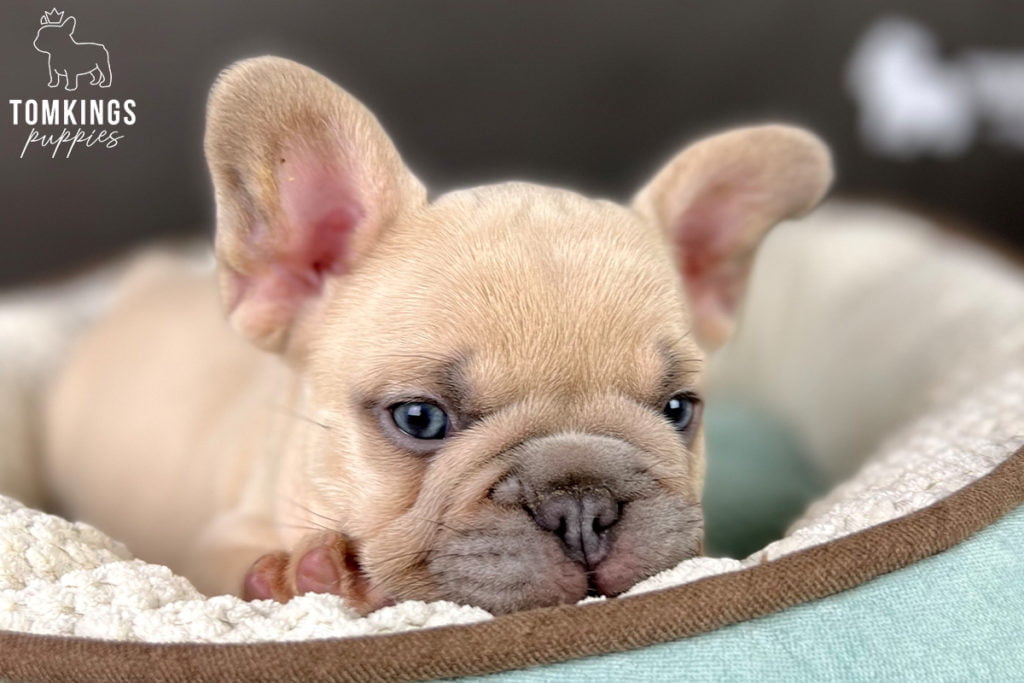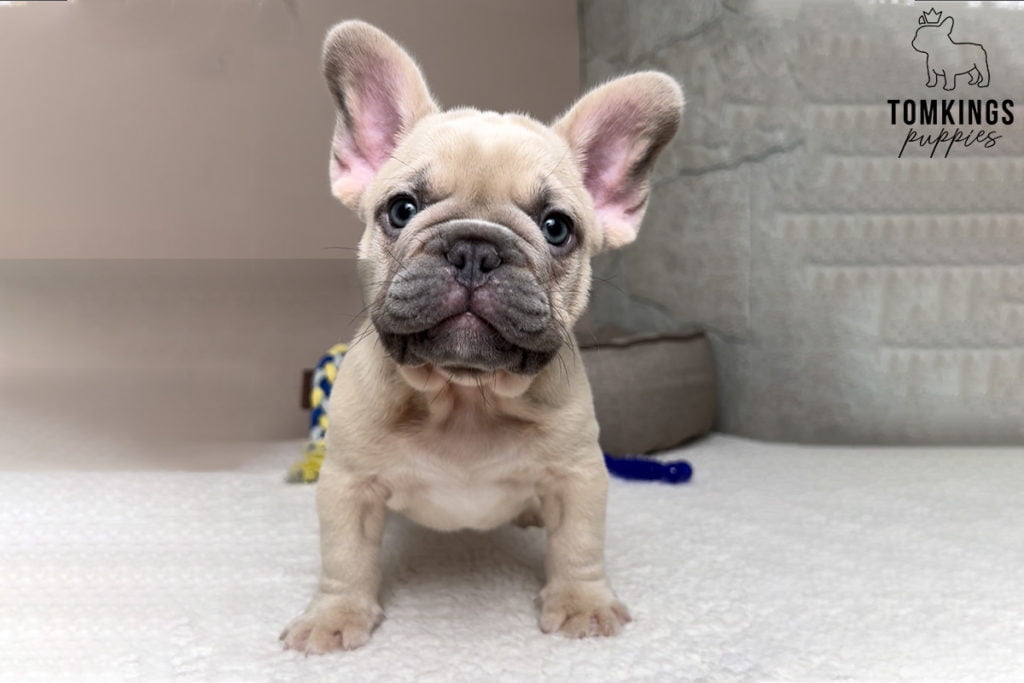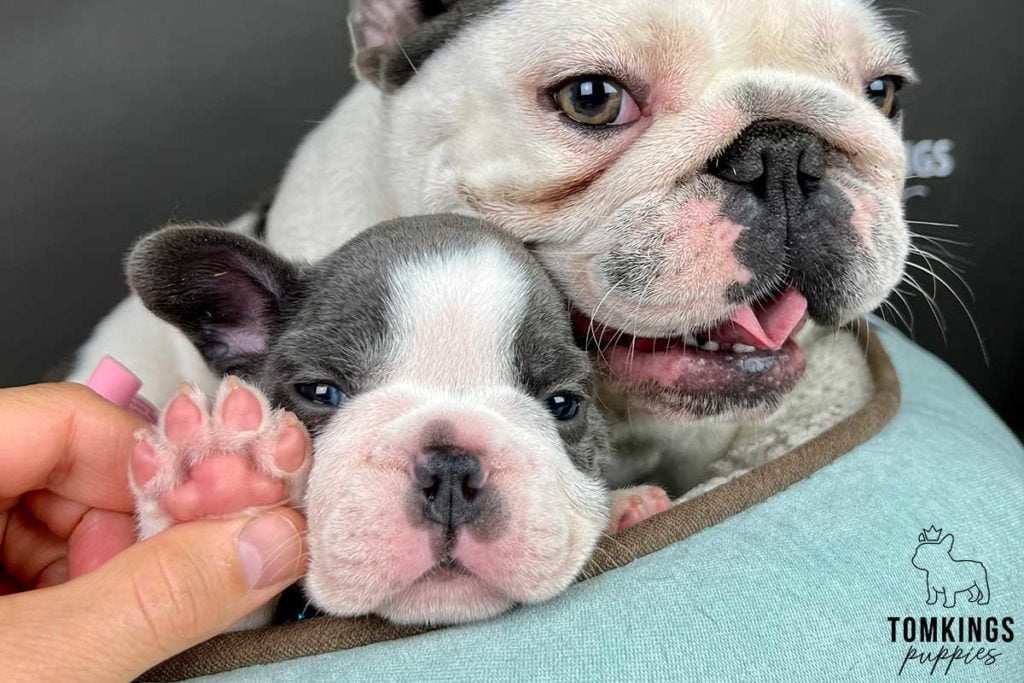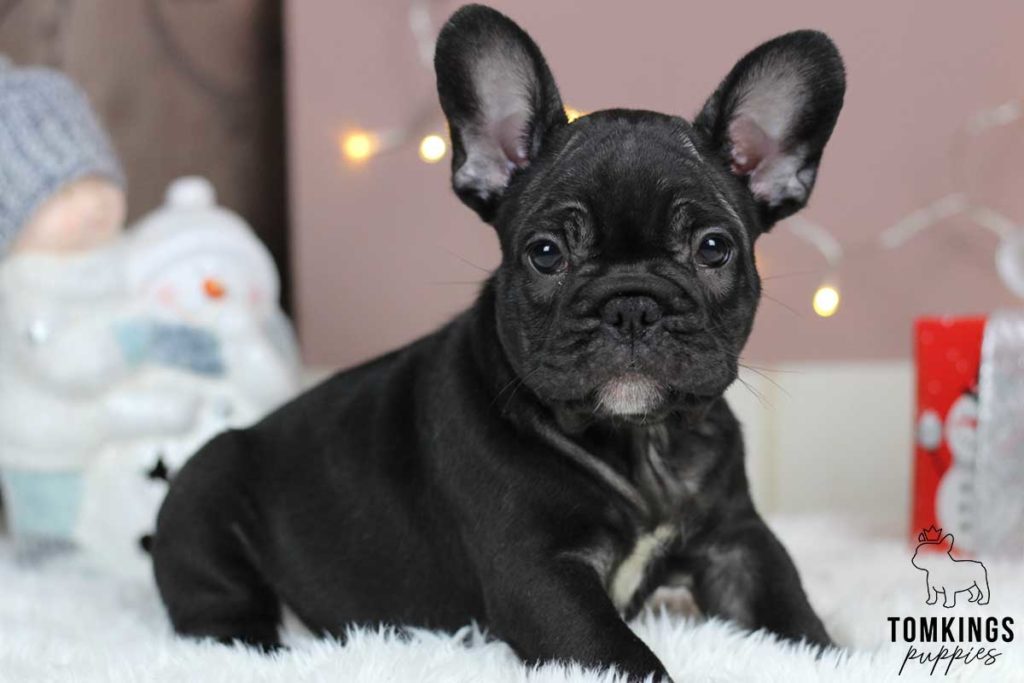A couple of weeks ago, we wrote an article about how you can teach your Frenchie to walk on a leash. This time, we decided to share some essential tips about another important topic that we receive constant questions about in the TomKings Frenchie Family Facebook group: crate training. As a Frenchie parent, you’ve probably encountered certain situations in which you need to keep your baby closed, usually for their own safety like when you’re traveling. In this article, we explain what the best method is to introduce your puppy to the crate so that they feel completely safe in it. We also share some thoughts about when we recommend you use one and what other alternatives you have when you need to leave your Frenchie alone at home.
How to choose the right crate for your Frenchie?
When you’re looking to purchase the perfect crate for your Frenchie, you should always take into account what their adult size will be, which is about 11-13 inches tall. You know it’s the right fit when your puppy can comfortably stand up and turn around in it. It’s important not to buy one that’s too big for them; it will not only take up a lot of space but your Frenchie will not feel safe in it either.

What are the steps to crate train your Frenchie?
Placement of the crate
First of all, you should choose a spot in the house where you usually spend a lot of time like the living room, and put the crate there so that it can be easily spotted. Leave its door open and place a soft blanket inside, preferably one that has your puppy’s scent on it. The first step is that your Frenchie learns that the crate is a part of your living room and gets completely used to its presence. If your baby goes near the crate and sniffs it, you should praise them by giving treats, petting, playing, or in any way you’d like. The main thing is that they associate it with something pleasant.
Playtime near the crate
The next step is that you play with your puppy multiple times a day near the crate, occasionally throwing a ball or toy inside. If they go and get it, or even just go near the crate, you should immediately praise them and show how happy you are!

Feeding near the crate
In most cases, puppies don’t even notice the crate in the room, so it’s a good idea to make a trail of dry dog food which is leading to the crate. Before feeding times, when your baby is already hungry, you can put 1-2 pieces of dry food at the entrance of the crate. Again, you should praise your Frenchie as soon as they sniff it, especially when they eat it as well. Every time, you should gradually place the food deeper and deeper in the crate. This can take a couple of weeks, so you need to be very patient!
Once your baby is completely comfortable with the crate and even goes in by themself, you can put their food bowl inside and let them have their dinner in there every day for at least 1-2 weeks! When they get used to the situation, you can slowly close the door of the crate while they are eating, but not entirely so that they can still come out. Later on, you can start locking it for a couple of minutes first, gradually increasing the amount of time they spend inside.

Locking the crate
It’s very important to mention that you should never lock the crate at the beginning of the training! You should even make sure that it doesn’t close by accident by putting something by the door. They should associate the crate with something pleasant like playtime, food and lots of praising. You should stay very patient and show every time how happy you are even when they make the slightest progress!
Taking your Frenchie for a drive
Once your Frenchie feels completely comfortable with the crate in your home, so they even go inside on their own, it’s time to take them out for a drive! Put the crate in the car with your Frenchie in it, and take them around the block for a short drive first. When you get home, take them out and give lots of praise! Next time, you can even take them for a short shopping and so on, keeping everything smooth and gradual. If you are patient and consistent, your puppy won’t mind being in their crate at all!

When is it recommended to crate your Frenchie?
There are several situations in which you’ll need to use a crate in order to keep your Frenchie safe. For example, when traveling with a puppy on a plane or in a car, using a portable plastic crate or a soft crate is almost essential. You should always check with the airline you’ll be flying with what their regulations are for flying with a pet, usually their crate should fit under the seat in front so a soft version could be a better option. When you’re on the road, there are several ways in which you can carry your Frenchie in your car, read our article if you’d like to know more about that.
There may be situations in your home as well when you need to keep your puppy somewhere closed, for example when you have guests with a baby who’ll be crawling on the ground or you just want to mop the floor and your puppy would be in your way. However, in cases when you need to go away from home and your Frenchie will be all alone for hours, it’s a better idea to keep them in a safe and quiet room with no carpet and no objects that they could damage. If there’s no door to that room, you can use a baby fence to close it off.
Place a soft and comfortable bed for your Frenchie there with their favorite toys, especially one they can chew on. This will be your baby’s safe space where they can retreat and relax for hours and have plenty of room to move around as opposed to a small crate. It’s important not to keep them in there only when you’re not at home as they’ll associate it with a negative experience and won’t feel safe. They may even develop separation anxiety, which you can read more about here.
Should you crate your Frenchie at night?
In the first few months, while your baby is not potty trained, we don’t recommend putting them in a crate for the night as they can’t hold their pee for long and will have no other choice but to do their business there. We know it’s hard work, but the best solution is to wake up and take them out at least three times at the beginning, you can gradually reduce that number as your baby gets older. Accidents can and probably will happen still, that’s why they should have their bed in a carpet-free room which you can easily mop, a safe space where you leave them during the day as well. Read our blog post about how you can train your Frenchie to sleep in their bed.
At the beginning, your fur baby might cry for you, which is completely normal at that point. It’s important to build their trust and let them know that you are close, so you should return to them and pet them a couple of times to keep them calm. What you shouldn’t do is to turn up as soon as you hear them crying as they’ll learn to take advantage of that! As the pack leader, you are the one who sets the boundaries; it definitely will be hard at the beginning, but if you’re patient and consistent, all your work will pay off in the end!

Our TomKings Frenchie Family members have also shared their experiences about the topic, if you’d like to read these, feel free to join our Facebook group! Are you maybe looking for your second fur baby? Two Frenchies are always better than one, so feel free to check out our available puppies here!
Visit our webshop to find some great Frenchie crates and carriers from Chewy that we recommend for your fur baby!
The article is based on the expert knowledge of the TomKings Puppies team who have been breeding French Bulldogs for 10 years on their farm. All the pictures in the post belong to them, and show puppies from their breed. If you have any questions or comments let us know below the article!
